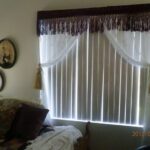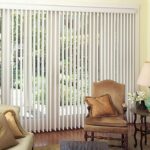Vertical window blinds are a popular and practical choice for many homeowners. Not only do they provide privacy and light control, but they also add a touch of elegance to any room. If you’re considering installing vertical window blinds in your home, this guide will help you choose the right style, material, and installation method for your needs.
Styles of Vertical Window Blinds
There are several different styles of vertical window blinds to choose from, each offering its own unique benefits and aesthetic appeal. The most common styles include:
– PVC Vertical Blinds: PVC (polyvinyl chloride) vertical blinds are a cost-effective and durable option. They are available in a wide range of colors and textures, making it easy to find a style that complements your existing decor.
– Fabric Vertical Blinds: Fabric vertical blinds offer a softer, more luxurious look compared to PVC blinds. They are available in a variety of fabrics, including sheer, semi-sheer, and blackout options, allowing you to control the amount of light entering a room.
– Wood Vertical Blinds: Wood vertical blinds add a touch of natural elegance to any room. They are available in a variety of wood finishes, including oak, maple, and cherry, making it easy to find a style that matches your furniture and flooring.
Materials for Vertical Window Blinds
In addition to the different styles of vertical window blinds, there are also a variety of materials to choose from. The most common materials include:
– Aluminum: Aluminum vertical blinds are lightweight, durable, and easy to clean. They are a popular choice for high-traffic areas such as kitchens and bathrooms.
– Faux Wood: Faux wood vertical blinds offer the look of real wood at a fraction of the cost. They are moisture-resistant, making them a good option for rooms with high humidity levels.
– Fabric: Fabric vertical blinds are available in a wide range of colors and patterns, making it easy to find a style that complements your decor. They are also available in blackout options for maximum light control.
Installation of Vertical Window Blinds
Installing vertical window blinds is a relatively simple process that can be done by homeowners with basic DIY skills. However, if you’re not comfortable installing them yourself, it’s best to hire a professional to ensure they are properly installed. Here are the basic steps for installing vertical window blinds:
1. Measure the width and height of the window opening to determine the size of the blinds you need.
2. Mount the brackets at the top of the window frame, making sure they are evenly spaced and level.
3. Attach the headrail of the blinds to the brackets, making sure it is securely in place.
4. Hang the individual slats on the headrail, making sure they are evenly spaced and aligned.
5. Test the blinds to ensure they open and close smoothly and adjust them as needed.
In conclusion, vertical window blinds are a versatile and practical window treatment option for any home. By choosing the right style, material, and installation method, you can add privacy, light control, and a touch of elegance to your living space. Whether you prefer PVC, fabric, or wood blinds, there are plenty of options to choose from to suit your taste and budget.













